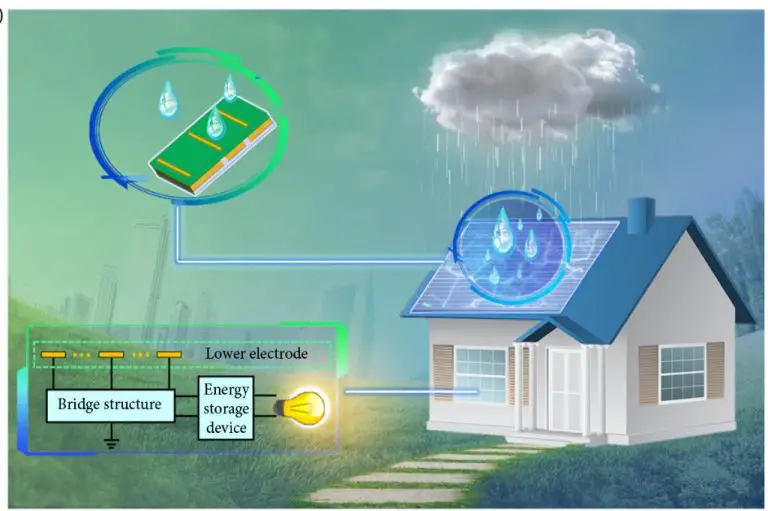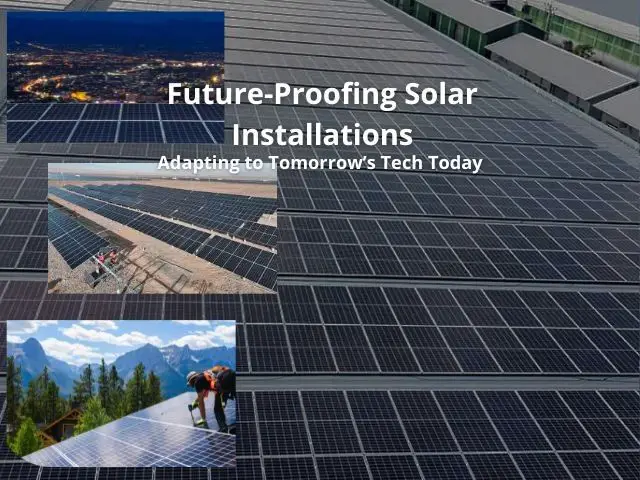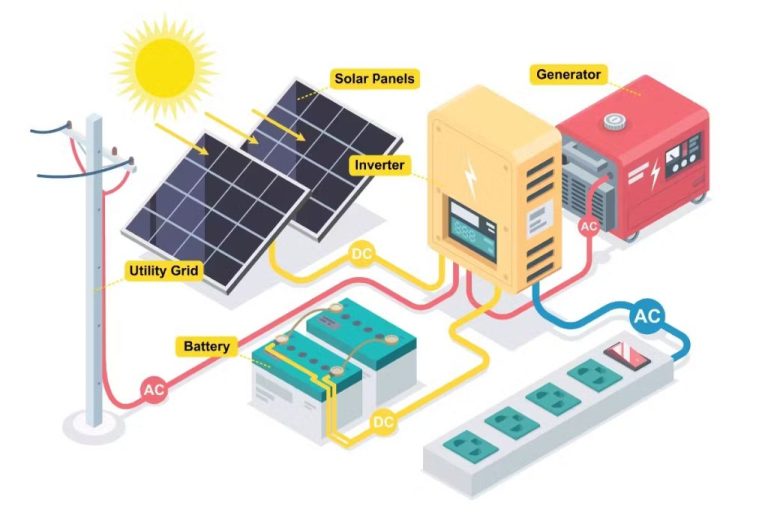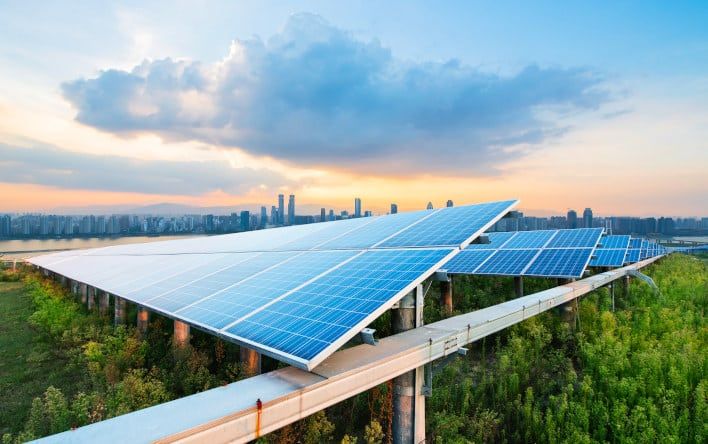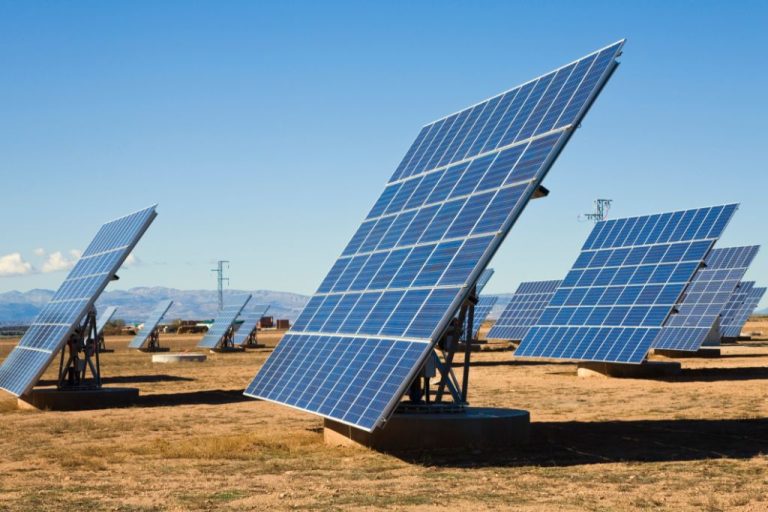Is Energy Renewable Or Nonrenewable
Renewable energy is energy that comes from resources which are replenished and renewed continually. Examples of renewable energy sources include sunlight, wind, rain, tides, waves, and geothermal heat. On the other hand, nonrenewable energy comes from sources that do not renew or cannot be replenished in a short period of time. Nonrenewable energy sources include fossil fuels like coal, petroleum, and natural gas. Once these resources are used up, they cannot be replaced for millions of years. The key difference between renewable and nonrenewable energy is that renewable sources can be continually restored while nonrenewable sources take a very long time to form and cannot be replaced as quickly as they are used up (https://cbdoilkor.com/renewable-energy-vs-nonrenewable-energy-a-comprehensive-comparison/).
Types of Renewable Energy
There are several major types of renewable energy sources that are in use today:
- Solar Energy – Solar panels convert energy from the sun into electricity. Solar energy can be used to power homes, businesses, and the electric grid (Nationalgrid, 2022).
- Wind Energy – Wind turbines use the wind’s kinetic energy to generate electricity. Wind farms with many turbines now provide power to millions of homes (UN, 2022).
- Hydroelectric Power – Hydropower plants capture energy from flowing water to produce electricity. Hydropower provides over 6% of U.S. electricity (Energy.gov, 2022).
- Geothermal Energy – Geothermal power plants use hot water or steam from under the earth’s surface to spin turbines for electricity generation (UN, 2022).
- Biomass Energy – Biomass refers to organic matter like plants, wood, and waste that is burned to create heat and electricity (Energy.gov, 2022).
Types of Nonrenewable Energy
The most common types of nonrenewable energy are fossil fuels, including oil, coal, and natural gas. Fossil fuels form in the Earth over millions of years and exist in limited quantities. Once they are used up, more cannot be produced, so they are considered nonrenewable.
Oil, also known as petroleum, is a liquid fossil fuel found deep underground that is used to power vehicles, generate electricity, and manufacture plastics and other materials. Oil wells tap into oil reservoirs beneath the Earth’s surface to extract the oil. Major oil producing regions include the Middle East, Russia, the United States, and Canada [1].
Coal is a solid fossil fuel formed by the compression of organic materials over geological timescales. Coal is burned to generate electricity, manufacture steel, and heat homes and businesses. The major coal producing countries are China, India, the United States, Australia, and Indonesia [2].
Natural gas is a fossil fuel formed by the decay of plant and animal matter. It is used to generate electricity, heat buildings, and power appliances. Natural gas is extracted via wells or extracted alongside oil. The top natural gas producers are the United States, Russia, Iran, Qatar, and Canada [3].
While fossil fuels currently meet the majority of the world’s energy needs, they are nonrenewable resources that will eventually be depleted. Alternatives and conservation are needed for the future.
[1] https://www.eia.gov/energyexplained/oil-and-petroleum-products/where-our-oil-comes-from.php
[2] https://www.worldatlas.com/articles/the-world-s-largest-coal-producers.html
[3] https://www.eia.gov/tools/faqs/faq.php?id=46&t=8
Pros and Cons of Renewable Energy
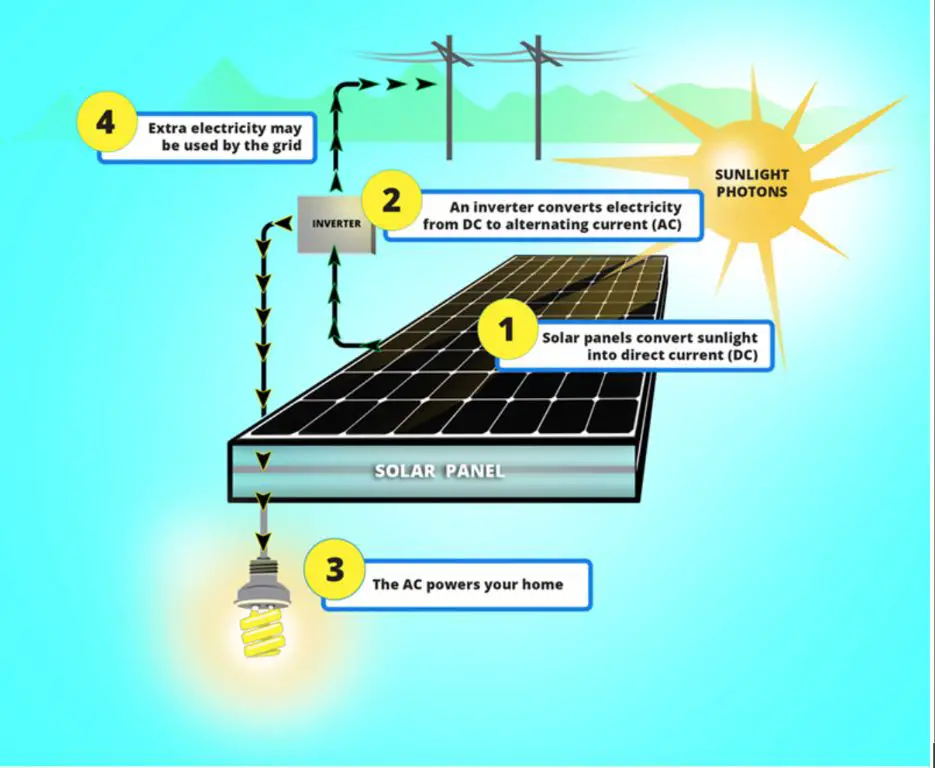
Renewable energy has a number of advantages over traditional fossil fuels. Firstly, renewable energy sources like solar, wind, and hydropower are environmentally friendly and sustainable. They produce little to no greenhouse gas emissions, reducing pollution and the impacts of climate change (1). Renewable energy technologies are constantly improving, becoming more efficient and cost-effective over time.
However, there are also some downsides to renewable energy. The main disadvantage is the upfront capital costs required to build renewable power plants and infrastructure, which can be expensive compared to fossil fuels (2). Renewable energy like solar and wind are also intermittent – they rely on weather conditions to generate electricity, meaning they can’t provide power 24/7 like fossil fuels can.
Despite the drawbacks, most experts think the pros of renewable energy far outweigh the cons. Renewables provide clean and sustainable power, reduce our dependence on finite fossil fuels, and limit the effects of climate change. With improving technology and government incentives, renewable energy is becoming an increasingly viable and cost-competitive alternative to traditional energy sources (3).
Sources:
(1) https://www.energysage.com/about-clean-energy/advantages-and-disadvantages-of-renewable-energy/
(2) https://www.greenmatch.co.uk/blog/2021/09/advantages-and-disadvantages-of-renewable-energy
(3) https://www.geothermal.org/our-impact/blog/pros-and-cons-renewable-energy-sources
Pros and Cons of Nonrenewable Energy
Nonrenewable energy sources like coal, oil, and natural gas have both advantages and disadvantages when compared to renewable energy sources like wind and solar power. Some of the key pros and cons of nonrenewable energy include:
Pros:
- Reliability – Nonrenewable sources provide consistent, steady energy production that can be ramped up or down to meet demand. This makes the electrical grid more reliable.
- Cheap – Extracting and using fossil fuels is currently less expensive than most renewable energy technologies. This makes energy more affordable for consumers.
Cons:
- Finite resources – Fossil fuels like coal and oil are finite resources that will eventually be depleted if their use continues unchecked. Renewables are considered infinite resources.
- Pollution – Burning fossil fuels produces air pollutants like sulfur dioxide and carbon emissions that contribute to climate change and environmental problems. Renewables produce little to no emissions.

Sources:
https://ezblockchain.net/article/pros-and-cons-of-non-renewable-energy/
https://group.met.com/en/mind-the-fyouture/mindthefyouture/pros-and-cons-of-fossil-fuels
Current Use of Renewable vs Nonrenewable
Globally, about 13% of energy came from renewable sources in 2019 according to the U.S. Energy Information Administration (https://www.eia.gov/tools/faqs/faq.php?id=92&t=4). The majority of global energy production still comes from fossil fuels like oil, coal, and natural gas.
In the United States, about 12.6% of energy came from renewable sources in 2019 according to the University of Michigan (https://css.umich.edu/publications/factsheets/energy/us-renewable-energy-factsheet). The main renewable sources were hydropower, wind, solar, and biofuels. Fossil fuels like petroleum, natural gas, and coal still make up about 80% of U.S. energy production.
The percentage of renewable energy is growing steadily both globally and in the U.S. But fossil fuels currently remain the dominant source of energy production and consumption.
Future Outlook
The future looks bright for renewable energy growth and continued decline in reliance on nonrenewable energy sources like coal and natural gas. According to a recent New York Times analysis, wind and solar power are rapidly expanding and now generate 23% of the world’s electricity. They are expected to overtake coal as the largest global source of power by 2025.
The International Renewable Energy Agency predicts renewable energy capacity will increase globally by over 60% between 2020 and 2026. The greatest growth is expected in solar photovoltaics, whose capacity may triple in that timeframe. Onshore wind capacity is also projected to grow substantially, by 57% by 2024. Declining costs for renewable technology are a major driver of this rapid growth.
In contrast, nonrenewable fossil fuels like coal, oil and natural gas are expected to steadily decline as a share of the global energy mix. Coal use peaked worldwide in 2013, and its share of electricity generation is projected to fall from 37% in 2021 to 28% by 2024. Reliance on nonrenewables is falling due to climate policies, public pressure, and the increasing affordability of renewable alternatives.
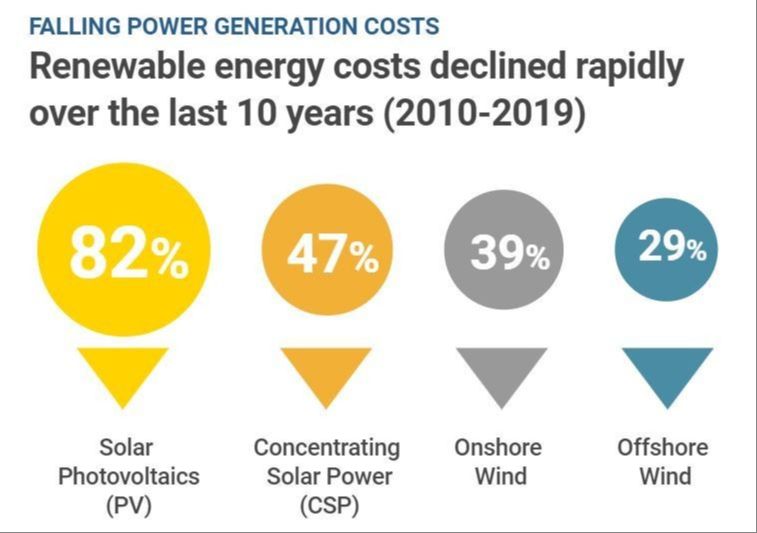
Citations:
[2] Earth.org
Government Policies
Government policies at the federal, state, and local levels significantly impact the usage and growth of renewable versus nonrenewable energy sources in the United States. Some key policies include:
Federal renewable energy subsidies and incentives: The federal government offers tax credits, grants, and loan programs to support renewable energy development and adoption. Major policies include the federal Investment Tax Credit (ITC), which provides a 26% tax credit for solar installations, and the Production Tax Credit (PTC), which provides tax credits per kilowatt-hour generated for wind, geothermal, and biomass (Source: https://www.energy.gov/eere/slsc/renewable-energy-tax-credits).
State renewable portfolio standards (RPS): As of 2022, 30 states and Washington, D.C. have RPS policies requiring utilities to supply a minimum portion of their electricity from renewable sources. RPS policies encourage renewable energy growth by creating guaranteed demand for renewables (Source: https://www.epa.gov/statelocalenergy/state-renewable-energy-policies).
Fossil fuel subsidies: The oil, gas, and coal industries have historically received substantial federal subsidies, including tax breaks, loan guarantees, below-market royalty and leasing rates, and liability limits. Though renewable subsidies have grown, fossil fuel subsidies still outweighed them by about 3 to 1 as of 2016 (Source: https://www.eesi.org/papers/view/fact-sheet-fossil-fuel-subsidies-a-closer-look-at-tax-breaks-and-societal-costs).
Individual Actions
There are many ways that individuals can support the transition to renewable energy in their daily lives. Here are some impactful actions to consider:
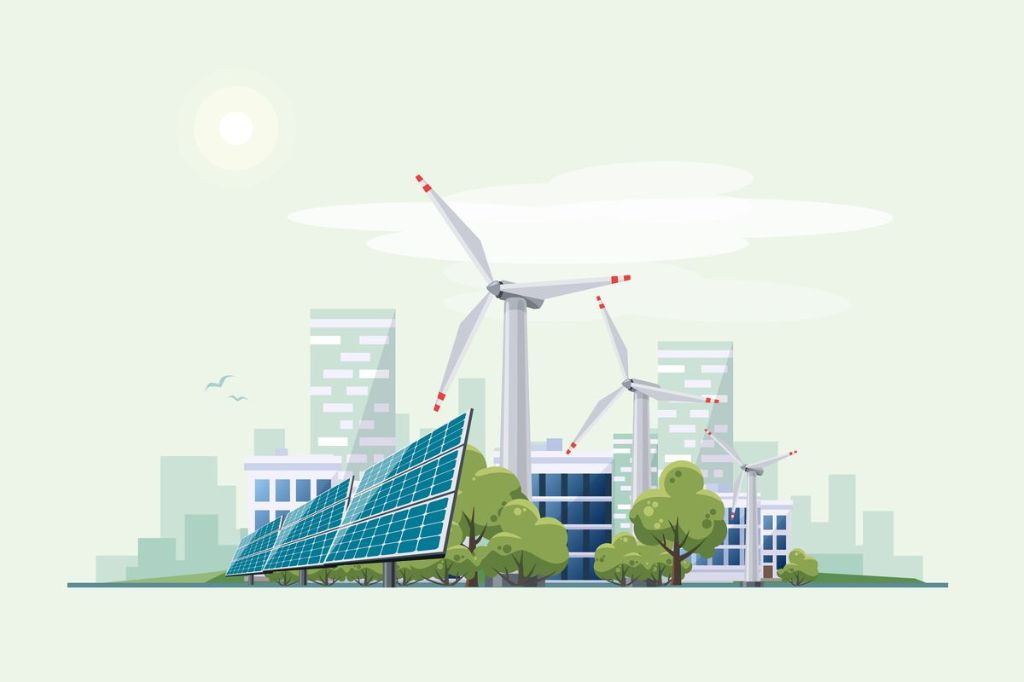
1. Switch to a renewable energy provider for your home electricity. Many utility companies now offer plans where your home can be powered by renewable sources like solar and wind. Ask your provider about renewable energy plans or shop for a green energy provider in your area.
2. Install renewable energy in your home, like rooftop solar panels or small wind turbines, if feasible. Tax credits and rebates may be available. Home renewable energy allows you to generate your own clean electricity.
3. Support community renewable energy programs. Many towns and cities are investing in local renewable energy projects, such as community solar farms or wind projects. Stay informed and advocate for clean energy in your community.
4. Let your elected representatives know you support renewable energy policies and investments. Write or call your elected officials at the local, state, and national level to urge renewable energy friendly legislation.
5. Invest in renewable energy funds or green technology companies through your retirement funds or other investments. This helps provide financing for the renewable sector.
6. Reduce your energy consumption to lower demand for nonrenewable sources. Make your home more energy efficient, drive more fuel efficient vehicles, and conserve electricity.
7. Educate yourself and others on renewable energy. Understanding the technologies, benefits, and challenges can help build wider public support.
8. Volunteer or work for an organization promoting renewable energy, such as a nonprofit advocacy group. Many hands make light work.
9. Offset carbon emissions from air travel through certified carbon offset programs that invest in renewable energy projects globally.
10. Vote with your dollars and choose products and services from companies committed to renewable energy and sustainability.
Conclusion
In summary, renewable energy comes from natural sources that are replenished, such as sunlight, wind, rain, tides, waves, and geothermal heat. Nonrenewable energy comes from finite resources that will eventually dwindle, primarily fossil fuels like coal, oil, and natural gas. Both have their advantages and disadvantages. Renewables are better for the environment but currently more expensive, while nonrenewables are cheaper but worse for climate change and pollution. The future likely involves a transition towards more renewables as costs decrease and storage solutions arise. Individuals can contribute by conserving energy, installing solar panels, avoiding plastics, voting responsibly, and pressuring governments and corporations to enact change. In conclusion, a mix of both renewable and nonrenewable energy will be needed to meet our needs today and in the future, but long-term sustainability requires a gradual shift towards cleaner renewable sources.


